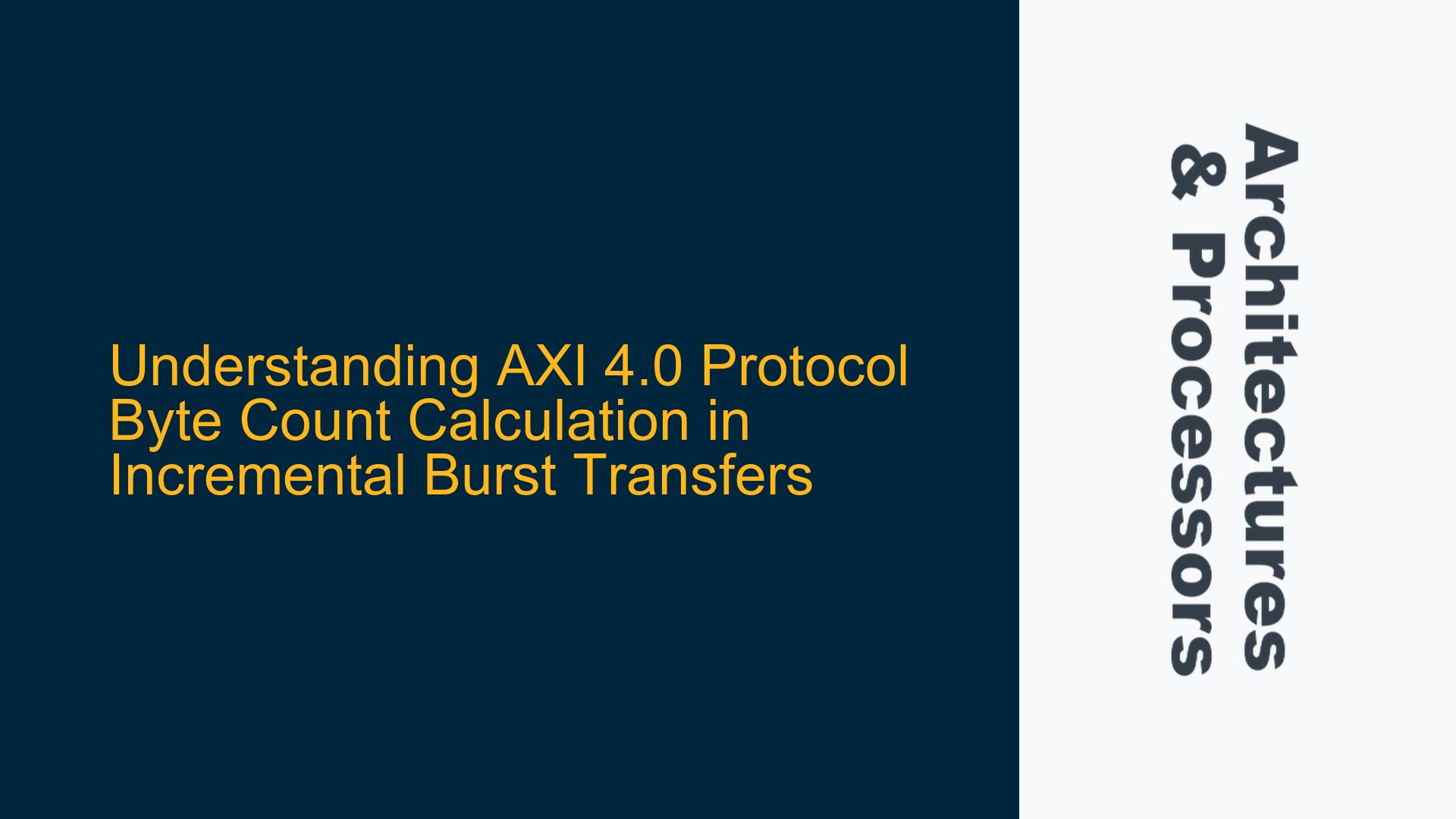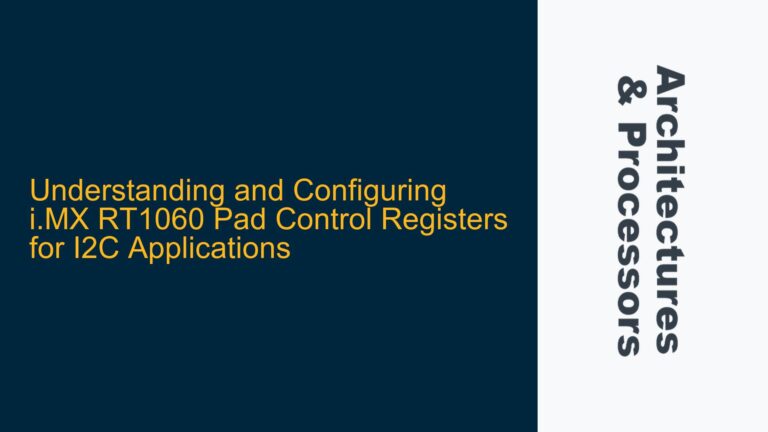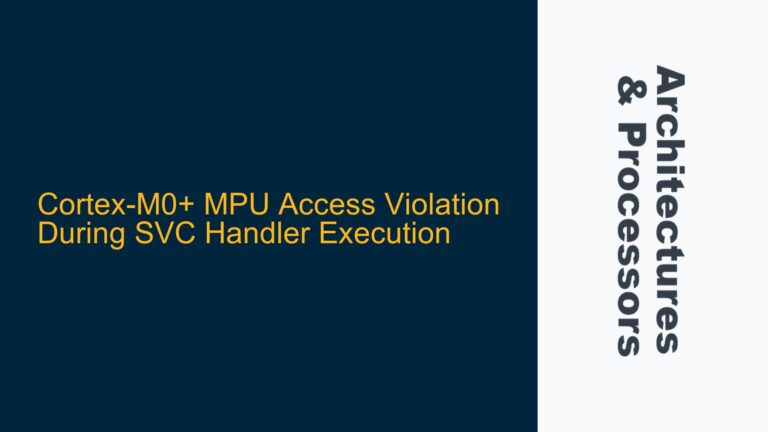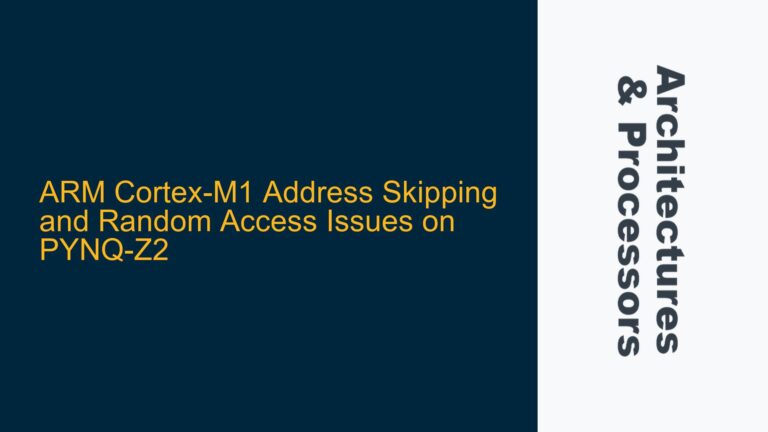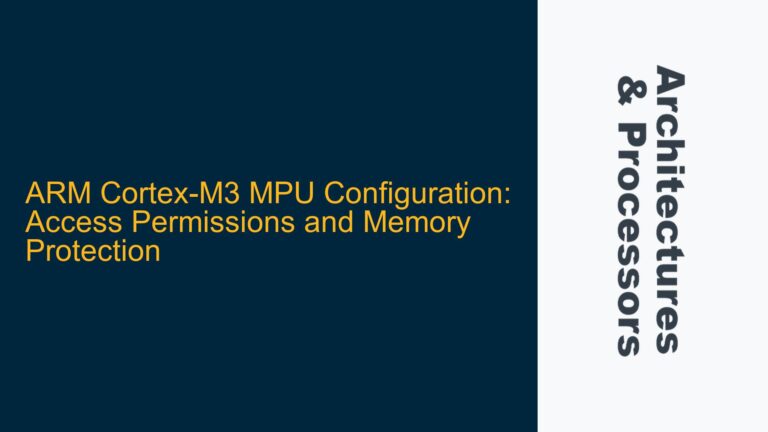AXI 4.0 Protocol Byte Count Calculation Challenges
The AXI 4.0 protocol is a widely used interface standard for high-performance embedded systems, particularly in ARM-based designs. One of the critical aspects of working with AXI 4.0 is accurately calculating the number of bytes transferred during a transaction. This calculation becomes particularly complex when dealing with incremental burst transfers, as multiple factors influence the final byte count. These factors include the burst width (AxSIZE), burst length (AxLEN), start address alignment (AxADDR), burst type (AxBURST), and, in the case of write transactions, the write strobe signals (WSTRB). Misunderstanding or overlooking any of these parameters can lead to incorrect byte count calculations, resulting in data corruption, inefficient memory usage, or system failures.
The complexity arises from the interplay between these parameters. For instance, the start address alignment affects which byte lanes are used in the first transfer of an incremental burst, while the burst type determines whether the byte lanes are fixed or vary across transfers. Additionally, the write strobe signals in write transactions further complicate the calculation by indicating which byte lanes contain valid data. This intricate relationship between parameters necessitates a deep understanding of the AXI 4.0 protocol and its nuances to ensure accurate byte count calculations.
Impact of AxSIZE, AxLEN, AxADDR, AxBURST, and WSTRB on Byte Count
The byte count in an AXI 4.0 transaction is influenced by several key parameters, each contributing to the overall complexity of the calculation. The burst width (AxSIZE) defines the number of bytes transferred in each beat of the burst. For example, an AxSIZE of 2 indicates a transfer width of 4 bytes (32 bits), while an AxSIZE of 3 indicates a transfer width of 8 bytes (64 bits). The burst length (AxLEN) specifies the number of beats in the burst, with a value of 0 indicating a single beat and higher values indicating multiple beats.
The start address (AxADDR) plays a crucial role in determining the byte count, especially when it is not aligned with the transfer width. In such cases, the first transfer in an incremental burst may not use all byte lanes, reducing the effective number of bytes transferred. For example, if the start address is 0x1003 and the transfer width is 4 bytes (AxSIZE = 2), the first transfer will only use the last byte lane, resulting in 1 byte being transferred instead of 4.
The burst type (AxBURST) further complicates the calculation by defining how the address changes between beats. In a fixed burst (AxBURST = 0), the address remains the same for each beat, meaning that only the byte lanes specified by the start address alignment are used in every transfer. In an incremental burst (AxBURST = 1), the address increments by the transfer width for each beat, allowing all byte lanes to be used in subsequent transfers.
For write transactions, the write strobe signals (WSTRB) add another layer of complexity. Each bit in the WSTRB signal corresponds to a byte lane in the data bus, indicating whether the byte lane contains valid data. If a byte lane is not marked as valid, it is not included in the byte count, even if the transfer width and burst length suggest otherwise. This means that the byte count for write transactions must account for both the transfer width and the WSTRB signals to accurately determine the number of valid bytes transferred.
Accurate Byte Count Calculation in AXI 4.0 Transactions
To accurately calculate the byte count in AXI 4.0 transactions, it is essential to consider all relevant parameters and their interactions. The first step is to determine the transfer width based on the AxSIZE parameter. This can be done using the formula:
[ \text{Transfer Width (bytes)} = 2^{\text{AxSIZE}} ]
Next, the total number of beats in the burst is calculated using the AxLEN parameter:
[ \text{Number of Beats} = \text{AxLEN} + 1 ]
The start address alignment must then be evaluated to determine the number of bytes transferred in the first beat. This is done by calculating the offset of the start address from the nearest lower address that is aligned with the transfer width:
[ \text{Offset} = \text{AxADDR} \mod \text{Transfer Width} ]
The number of bytes transferred in the first beat is then:
[ \text{Bytes in First Beat} = \text{Transfer Width} – \text{Offset} ]
For subsequent beats in an incremental burst, the full transfer width is used, as the address increments by the transfer width for each beat. The total byte count for an incremental burst can be calculated as:
[ \text{Total Bytes} = \text{Bytes in First Beat} + (\text{Number of Beats} – 1) \times \text{Transfer Width} ]
In the case of a fixed burst, the number of bytes transferred in each beat is the same as the first beat, as the address does not change. Therefore, the total byte count for a fixed burst is:
[ \text{Total Bytes} = \text{Number of Beats} \times \text{Bytes in First Beat} ]
For write transactions, the WSTRB signals must be taken into account to determine the number of valid bytes transferred in each beat. This can be done by counting the number of set bits in the WSTRB signal for each beat and summing them across all beats:
[ \text{Total Bytes} = \sum_{i=1}^{\text{Number of Beats}} \text{Number of Set Bits in WSTRB}_i ]
By following these steps and considering all relevant parameters, it is possible to accurately calculate the byte count in AXI 4.0 transactions, ensuring correct data transfer and efficient system operation.
Practical Example: Byte Count Calculation in an Incremental Burst
To illustrate the byte count calculation process, consider an example where an AXI 4.0 master initiates an incremental burst with the following parameters:
- AxSIZE = 2 (transfer width = 4 bytes)
- AxLEN = 3 (number of beats = 4)
- AxADDR = 0x1003 (start address)
- AxBURST = 1 (incremental burst)
First, the transfer width is determined:
[ \text{Transfer Width} = 2^2 = 4 \text{ bytes} ]
Next, the number of beats is calculated:
[ \text{Number of Beats} = 3 + 1 = 4 ]
The start address alignment is then evaluated:
[ \text{Offset} = 0x1003 \mod 4 = 3 ]
The number of bytes transferred in the first beat is:
[ \text{Bytes in First Beat} = 4 – 3 = 1 \text{ byte} ]
For the remaining beats, the full transfer width is used:
[ \text{Bytes in Subsequent Beats} = 3 \times 4 = 12 \text{ bytes} ]
The total byte count for the burst is:
[ \text{Total Bytes} = 1 + 12 = 13 \text{ bytes} ]
This example demonstrates how the start address alignment affects the byte count in the first beat and how the full transfer width is used in subsequent beats of an incremental burst.
Practical Example: Byte Count Calculation in a Fixed Burst
Now, consider an example where an AXI 4.0 master initiates a fixed burst with the following parameters:
- AxSIZE = 1 (transfer width = 2 bytes)
- AxLEN = 2 (number of beats = 3)
- AxADDR = 0x1001 (start address)
- AxBURST = 0 (fixed burst)
First, the transfer width is determined:
[ \text{Transfer Width} = 2^1 = 2 \text{ bytes} ]
Next, the number of beats is calculated:
[ \text{Number of Beats} = 2 + 1 = 3 ]
The start address alignment is then evaluated:
[ \text{Offset} = 0x1001 \mod 2 = 1 ]
The number of bytes transferred in each beat is:
[ \text{Bytes per Beat} = 2 – 1 = 1 \text{ byte} ]
The total byte count for the burst is:
[ \text{Total Bytes} = 3 \times 1 = 3 \text{ bytes} ]
This example illustrates how the start address alignment affects the byte count in each beat of a fixed burst, as the address remains the same for all beats.
Practical Example: Byte Count Calculation in a Write Transaction
Finally, consider an example where an AXI 4.0 master initiates a write transaction with the following parameters:
- AxSIZE = 2 (transfer width = 4 bytes)
- AxLEN = 1 (number of beats = 2)
- AxADDR = 0x1000 (start address)
- AxBURST = 1 (incremental burst)
- WSTRB = 0b1101 (byte lane 0, 1, and 3 are valid)
First, the transfer width is determined:
[ \text{Transfer Width} = 2^2 = 4 \text{ bytes} ]
Next, the number of beats is calculated:
[ \text{Number of Beats} = 1 + 1 = 2 ]
The start address alignment is then evaluated:
[ \text{Offset} = 0x1000 \mod 4 = 0 ]
Since the start address is aligned, the number of bytes transferred in the first beat is:
[ \text{Bytes in First Beat} = 4 \text{ bytes} ]
However, the WSTRB signal indicates that only byte lanes 0, 1, and 3 are valid, so the number of valid bytes in the first beat is:
[ \text{Valid Bytes in First Beat} = 3 \text{ bytes} ]
For the second beat, the address increments by the transfer width (0x1004), and the WSTRB signal is assumed to be the same (0b1101). Therefore, the number of valid bytes in the second beat is also 3 bytes.
The total byte count for the write transaction is:
[ \text{Total Bytes} = 3 + 3 = 6 \text{ bytes} ]
This example demonstrates how the WSTRB signals affect the byte count in write transactions, even when the transfer width and burst length suggest a higher number of bytes.
Conclusion
Accurately calculating the byte count in AXI 4.0 transactions requires a thorough understanding of the protocol’s parameters and their interactions. The burst width (AxSIZE), burst length (AxLEN), start address alignment (AxADDR), burst type (AxBURST), and write strobe signals (WSTRB) all play critical roles in determining the number of bytes transferred. By carefully considering each of these parameters and following a systematic approach, it is possible to ensure accurate byte count calculations, leading to reliable and efficient system operation. Whether dealing with incremental bursts, fixed bursts, or write transactions, a meticulous analysis of the relevant parameters is essential for successful AXI 4.0 implementations.
